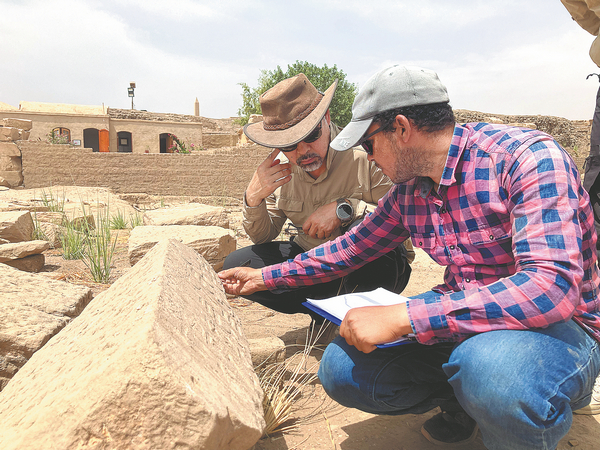

"The area had not been systematically researched by archaeologists for more than 40 years," says Jia Xiaobing, a researcher at the institute and executive director of the Chinese side of the joint archaeological team.
"When we first came here, what we could see was basically wild grass as tall as a person," he recalls. "We had to clear it up before we did anything else."
According to Jia, team members from both countries have been ambitiously attempting to gain a greater understanding of the layout, sequence of construction and functions of the site, while trying to explain the historical role of the Temple of Montu during the New Kingdom period (c. 16th century-11th century BC).
From April to early June this year, a new round of excavation was conducted at the site. After a nearly 3-year hiatus caused by the COVID-19 pandemic, Jia is excited to set foot on the site again. "It's also a journey to meet old friends again," he says.
When Jia's team arrived in Egypt in 2018, more than 250 archaeological excavations were ongoing, and about two-thirds were led by international teams from 20-odd countries.
"We are perhaps relatively late starters," Jia says. "But we have the chance to join the frontier of international Egyptology and make our own contribution to the terrain. ... Egypt also provides us a precious platform for frequent exchange with archaeologists from other countries."
Jia's Egyptian counterpart, Mostafa al-Saghir, general director of the Karnak Temples and Avenue of Sphinxes at the Egyptian Ministry of Tourism and Antiquities, notes that the well-selected Chinese team has a great deal of experience and expertise in archaeology, Egyptology and cultural relic conservation, as well as of modern methods of recording, analyzing and interpreting discoveries.
"Most importantly, scholars from a great civilization like China can feel and, maybe sometimes, understand other civilizations better," he says.